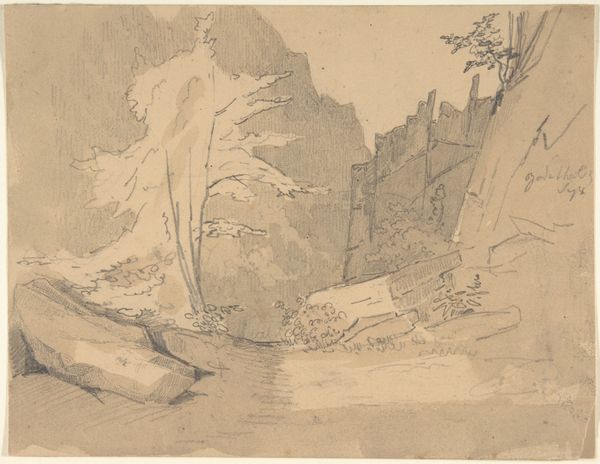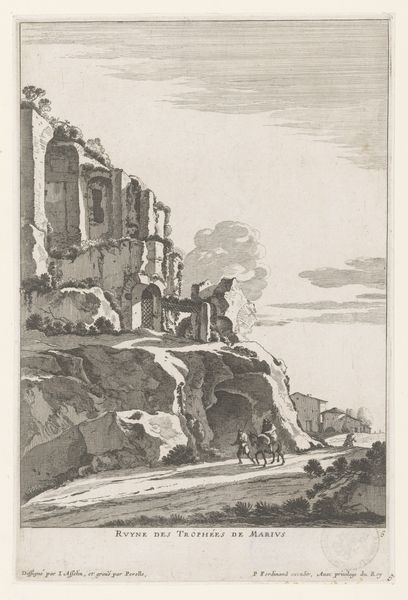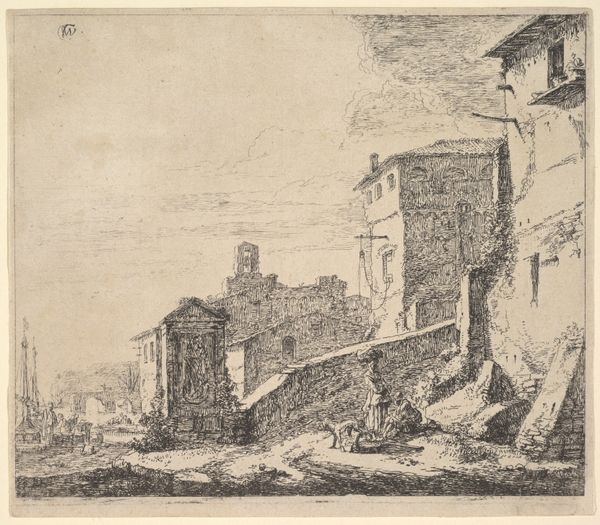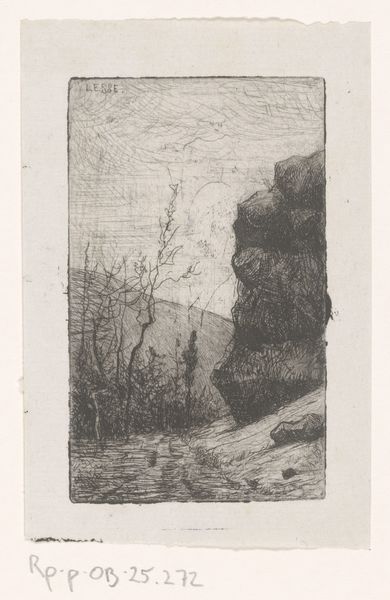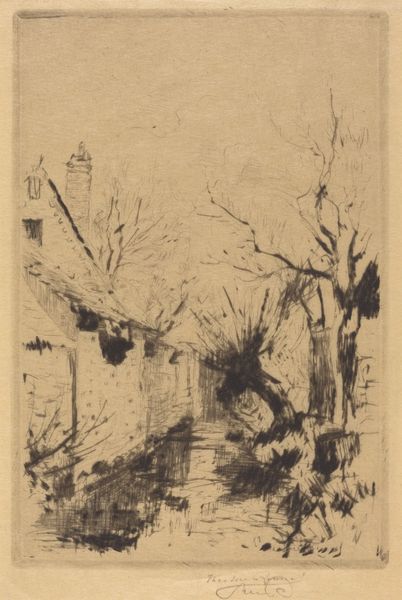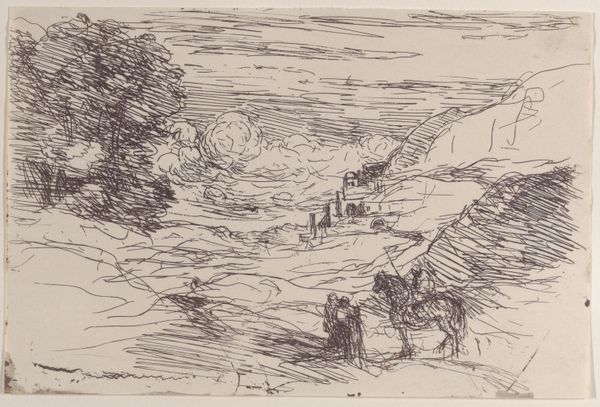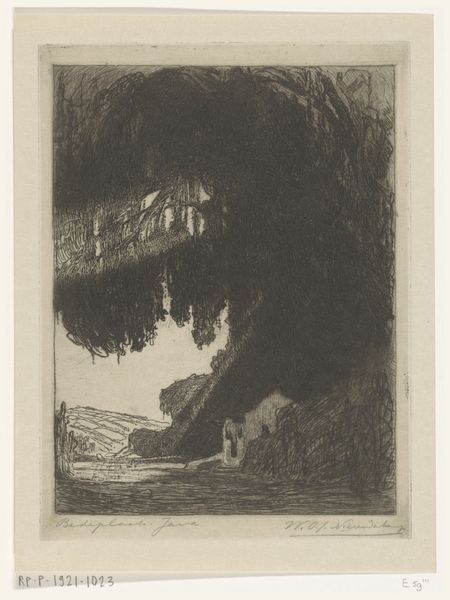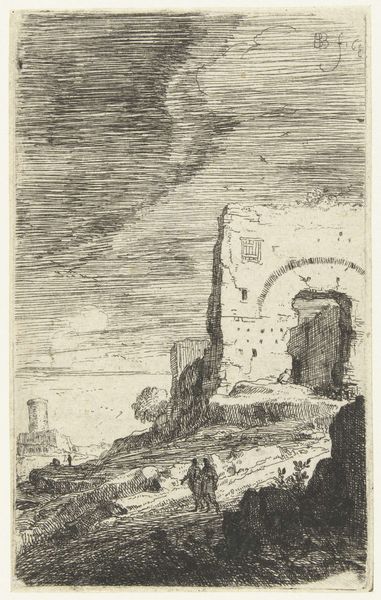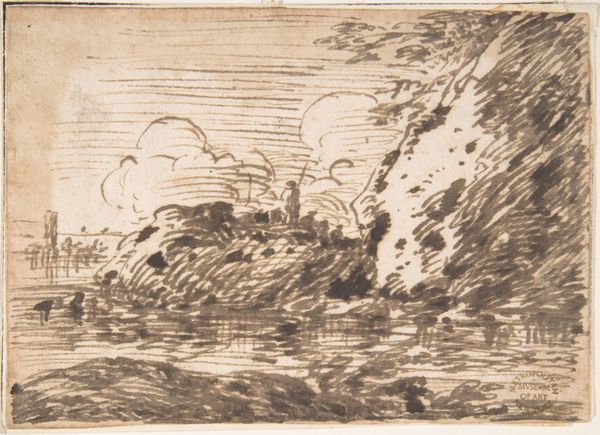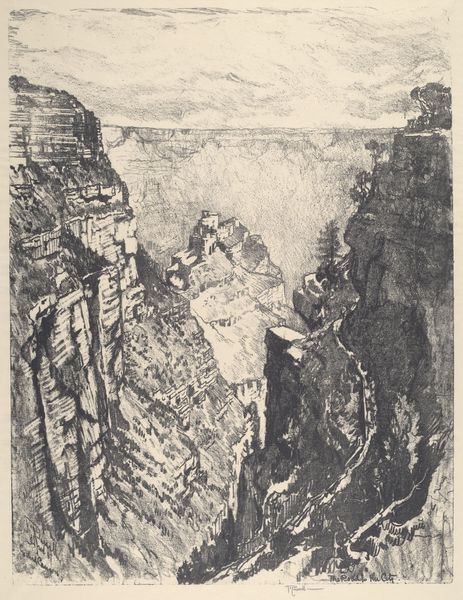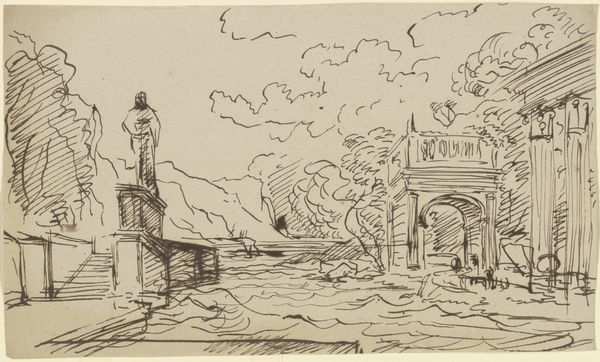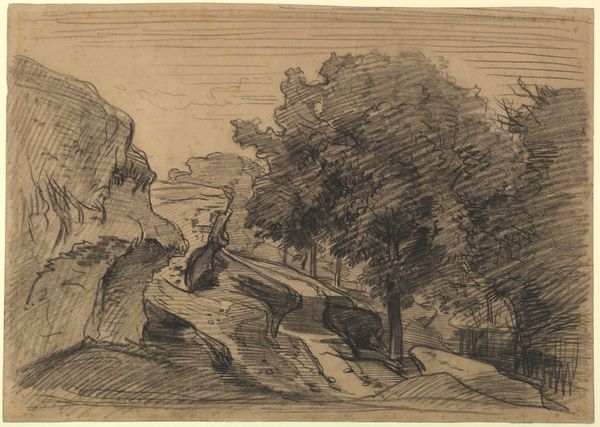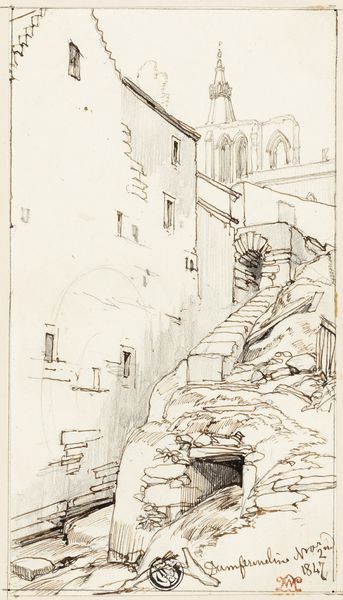
Copyright: National Gallery of Art: CC0 1.0
Curator: We're looking at "L'empire c'est la paix", or "The Empire is Peace," a lithograph created in 1870 by Honoré Daumier. Editor: The immediate feeling is stark devastation. Look at that ruined structure—almost skeletal against the turbulent sky. There's a palpable sense of destruction communicated through the artist's hand. Curator: It’s certainly not a vision of peace, is it? Daumier was a master of visual irony, especially potent during periods of political turmoil. The title itself becomes deeply sarcastic in light of the imagery. The Second Empire under Napoleon III was crumbling, plagued by war and internal conflict, Daumier seizes on this discord. Editor: The composition emphasizes this powerfully. That thick cloud of smoke mirroring the rough foreground creates an enclosed sense of doom. Also note the textural differences; Daumier uses denser hatching to define those rock formations as opposed to the open sky—grounding us in the grim reality of war. Curator: Daumier often used caricature to criticize the powers that be. Here, rather than a direct portrait of a politician, we have this scene that encapsulates the cost of their ambition. Notice also the tiny birds amidst the destruction. There is still life persisting, carrying a fragile symbolism of hope amidst devastation. The skeletal remains almost mock the glorious empire Napoleon III claimed to be building. Editor: Exactly. This tension between fragility and brutal destruction really defines it. And the use of lithography really serves the overall impression of gloom – the grainy texture emphasizing grit. You can almost feel the ashes. Curator: He truly captures the zeitgeist of the time. His visuals gave tangible form to public dissent. It became the visual shorthand of resistance against the status quo. The ruins serving as a constant memento of the failings of governance. Editor: This is a sobering image, far from propagandistic gloss that often defines war portrayals. He forces us to confront reality. It resonates as much today as it must have then.
Comments
No comments
Be the first to comment and join the conversation on the ultimate creative platform.
